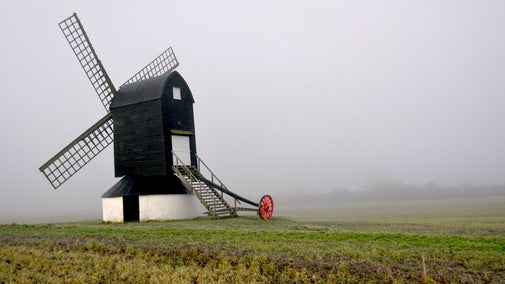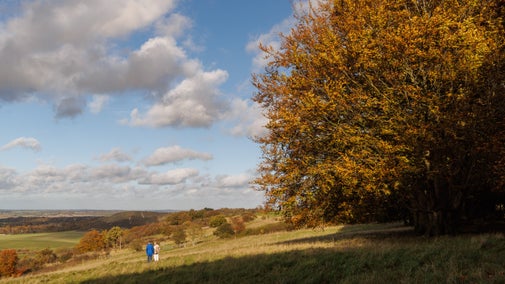The best of Coombe Hill walk
Oxfordshire, Buckinghamshire & Berkshire
This gentle circular stroll takes in the highlights of Coombe Hill, including panoramic views across the Aylesbury Vale and Chequers, the country retreat of the serving Prime Minister. You’ll also see rare chalk grassland filled with wildflowers and butterflies in summer. In winter, this is the ideal walk if you’re seeking some fresh air to blow away the cobwebs.
Near to
Chilterns CountrysideStart point
Near car park, grid ref: SP851062Trail information
*The walk is waymarked with orange arrows mounted on wooden posts at all major changes in direction. The first half of this walk as far as the monument (points 1 - 4) is accessible by wheelchair or pushchair, but the second half is accessible only on foot. If you have a wheelchair or pushchair please return to the car park along the gravel path after step 4.
**Dogs welcome under very close control. Cattle graze the site throughout the summer months.
Slippery conditions
The Ridgeway section of this trail (after step 4) can be very slippery after heavy rain or in icy conditions.
More near here
Coombe Hill and Chequers trail
Enjoy a moderately energetic circular walk from Coombe Hill, taking in views across the Aylesbury Vale. You'll wander through woodlands, past rare chalk grassland and the pretty village of Ellesborough.

Hambleden Mill to Henley-on-Thames circular river walk
This circular Thames walk takes in a historic watermill, the Henley Regatta course, views across the Thames Valley and quiet stretches of river with the chance to spot wildlife.

Coombe Hill Woodland Walk
Follow this gentle circular trail in the Chilterns through beech woodland to the top of Coombe Hill, with far-reaching views from its summit.

Hambleden and Pheasant’s Hill trail
Visit rural hamlets, stroll through beech woods and enjoy views across the Hambleden Valley on the Hambleden and Pheasant’s Hill trail.

Get in touch
Chilterns Countryside, c/o Hughenden estate, High Wycombe, Buckinghamshire, HP14 4LA
Our partners

We’ve partnered with Cotswold Outdoor to help everyone make the most of their time outdoors in the places we care for.
You might also be interested in
Pitstone Windmill
A rare and striking example of an early form of post mill

Ashridge Estate
Ancient trees, rolling chalk downlands and lush meadows in an area of outstanding natural beauty

Staying safe at National Trust places
The special places in National Trust care sometimes come with a few risks for visitors, be it coastline or countryside. Find out how to keep safe throughout your visits.

Walking
Explore some of the finest landscapes in our care on coastal paths, accessible trails, woodland walks and everything in between. Find the best places to walk near you.

Cotswold Outdoor: our exclusive walking partner
Learn about the National Trust’s ongoing partnership with Cotswold Outdoor. Find out how they help us care for precious places and the exclusive discount available for National Trust supporters.




